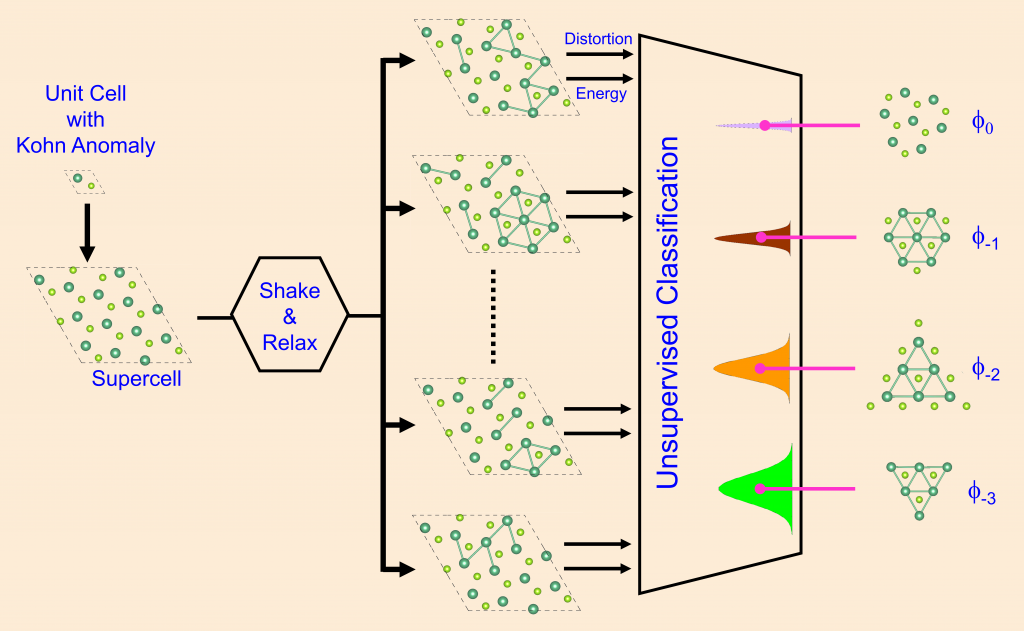Can a Machine Learn Charge Density Waves?
Charge density wave (CDW) is a quantum mechanical phenomenon, which induces distortion in the crystal structures of some low-dimensional (1D or 2D) metals, when the temperature is reduced. Such distorted crystal structure is known as CDW phase and its resistivity is much higher than the original symmetric phase. Since the switching between symmetric and CDW phase can also be made by the application of external electric field, these materials are technologically important. They find applications in memristive based in-memory computing, transistor-less logic circuit and oscillatory neural networks.
The rapid computational screening for exotic and application-specific properties in 2D materials (e.g. non-trivial topological order, high-temperature ferromagnetism, superior catalytic activity etc.) is becoming increasingly important these days. First-principle based rapid prediction of CDW phases in 2D materials has not yet been reported. Currently, there is a gaping scarcity of suitable 2D CDW materials for Nanoelectronic device applications. We bridge this gap by developing an automated high-throughput computational tool combining first-principles-based structure-searching technique and unsupervised machine learning, which identifies CDW phases from a unit cell with inherited Kohn anomaly.
Although machine learning techniques are now being extensively used in material sciences, these studies mostly involve supervised regression to predict certain material properties. Here we deploy unsupervised classification, thanks to which, we find a host of undiscovered phases for even extensively studied 2D CDW materials such as 1T-TaS2 and 2H-NbSe2. The proposed methodology not only rediscovers the known CDW phases but also predicts a host of easily exfoliable new CDW materials (a total 30 materials and 114 phases) along with associated electronic structures. Among many promising candidates, we pay special attention to ZrTiSe4 and conduct a comprehensive analysis to gain insight into the quantum-mechanical-phenomana called ‘Fermi-surface-nesting’, which causes significant semiconducting gap opening in its CDW phase.
Our findings could provide useful guidelines for the experimentalists and foster practical application of CDW materials in nanoelectronics.
References
Arnab Kabiraj and Santanu Mahapatra, “Machine-Intelligence-Driven High-Throughput Prediction of 2D Charge Density Wave Phases”, The Journal of Physical Chemistry Letters, 2020.
https://pubs.acs.org/doi/10.1021/acs.jpclett.0c01846
Presentation Video: https://youtu.be/ZGWJH5qMSr8
Website: https://faculty.dese.iisc.ac.in/santanu/
Faculty: Santanu Mahapatra, ESE

